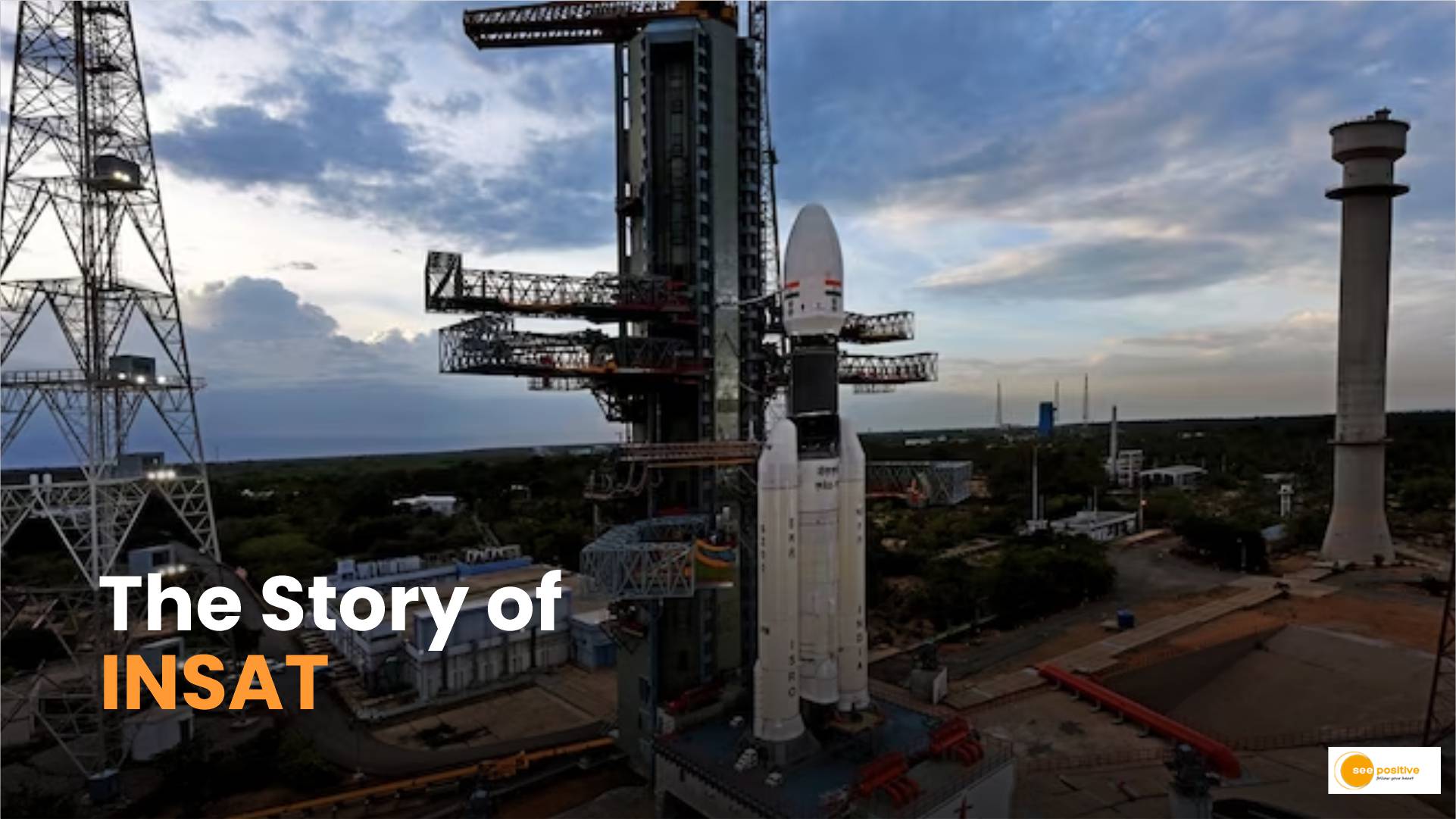The launch of INSAT-3DS by the Indian Space Research Organisation (Isro) would mark a significant step forward in meteorology.
This satellite, scheduled to launch on February 17 at 5:30 PM IST from Sriharikota’s Satish Dhawan Space Centre, is projected to permanently alter India’s weather forecasting capabilities.
The Indian National Satellite System (INSAT) story is more than just a technological evolution; it is also a cornerstone of India’s long-term aspiration of self-reliance and connectedness.
How It Began
This story begins in the 1960s, when Homi Jahangir Bhabha, the founder of India’s nuclear research program, and his successor, Vikram Sarabhai, lay the framework for the country’s space program. As early as 1965, Bhabha investigated the possibility of an indigenous satellite.
He met with Arnold Frutkin, NASA’s Deputy Director for International Affairs at the height of the Cold War, to seek technical expertise rather than a completed product.
The move was met with opposition due to the lack of benefits that such collaboration would provide for the American Space Agency.
Despite an even more difficult climate typified by international opposition, particularly from the United States and Britain, Sarabhai remained resolute. His perseverance amidst global pressure and scepticism was instrumental in conceiving the idea of INSAT in 1967, a concept that would revolutionise India’s space endeavours.
When Nasa Finally Launched It
INSAT’s formal journey began in 1982, with a vision that went beyond space exploration to transcend terrestrial differences in India’s diverse environment.
However, the journey was plagued with obstacles. The early years were distinguished by a reliance on international cooperation. Ford Aerospace created the INSAT-1 series, which was launched into space by Nasa or Ariane.
This time also saw improvements with borrowed spacecraft, such as the repurposing of ARABSAT-1C as INSAT-2DT following the failure of INSAT-2D.
However, such dependencies served as stepping stones to increased autonomy. The space agency’s determination transformed initial mistakes into self-sufficient progress with the construction of the Geosynchronous Satellite Launch Vehicle (GSLV).
Insat-3ds Set To Launch
INSAT-3DS, the latest feather in Isro’s cap, is expected to bring unprecedented precision in weather forecasting and catastrophe management. This powerful satellite carries complex instrumentation designed to study India’s unique weather patterns, giving it an advantage over worldwide rivals such as NASA’s GOES-T and China’s FY-4 series.
While the latter provides comprehensive global data, INSAT-3DS concentrates on high-resolution imaging required for specific regional forecasts.
The forthcoming 16th GSLV mission intends to install INSAT-3DS in Geosynchronous Transfer Orbit (GTO).
This position is critical for providing continuous monitoring of weather systems across India, which can significantly improve preparedness for natural disasters, potentially saving lives and reducing damage.
How Insat Made India Self-Reliant?
The INSAT series has had a significant impact on India’s economy and society, and it is predicted to create income of 445 crore in 2023-2024 by “providing satcom services.” More crucially, the indirect benefits, such as advances in tele-education, increased agricultural productivity due to accurate weather forecasting, and improved disaster management, have been revolutionary.
For example, accurate cyclone prediction and prompt warning dissemination have been crucial in evacuation and preparedness plans, demonstrating INSAT’s critical significance in life-saving efforts.
The system’s communication services have also been critical during relief operations, providing crucial assistance in times of need.
INSAT’s importance, therefore, goes much beyond financial metrics. It is in the development of farmers who can plan crops around the monsoons, the lives saved by timely weather alerts, and the daily connectivity it provides to India’s most distant areas.
It has boosted economic growth and contributed to minimizing the effects of climate change on the vulnerable Indian subcontinent.
The technological improvements made possible by this program have established India as a major player in the global space industry.
As the GSLV prepares to penetrate the sky with INSAT-3DS aboard, India looks to the heavens with not only hope but confidence. The INSAT-3DS mission is not just about launching a satellite; it is about launching India into a new era of self-reliance and innovation.
Positive Takeaway
INSAT-3DS represents more than just a satellite launch; it symbolizes India’s determination to harness space technology for the benefit of its citizens. This achievement underscores the country’s progress in space exploration and its ability to overcome challenges, transforming setbacks into opportunities for innovation and self-sufficiency.
As INSAT-3DS takes its place in the Geosynchronous Transfer Orbit, India stands at the forefront of cutting-edge meteorological advancements, paving the way for a future where the nation can harness its own resources for the betterment of society.


